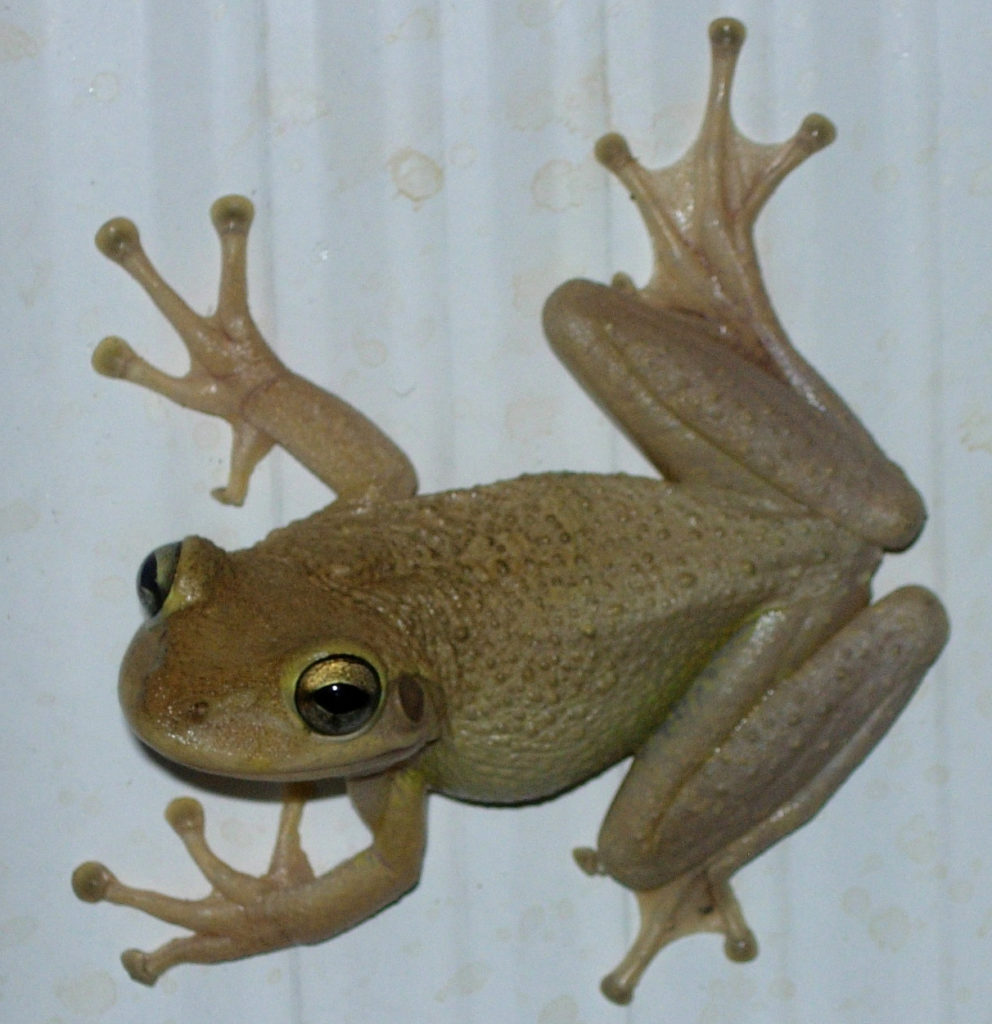I was quite surprised one evening in early April to see the fellow displayed below staring intently at me from outside the screen of my den window. I’m at my desk reflected in the window.
Was he curious about my current writing project, or was his interest more personal? Those who read my article earlier this year about our experience returning to Florida after a 19 month absence may recall a reference to frogs. There were dozens of them hiding out under the fabric screens we use for hurricane protection. Removing the screens without getting slimed by them was a challenge. Sensing that it was April, was this fellow tapping his pads and wondering just when we were leaving, and when the protective coverings would again be installed on this window, one of their favorites.
As is so often the case, curiosity got the best of me the next day and I had to identify and learn more about this frog. To my dismay I discovered that he was yet another invasive species imported from Cuba. In recent years I have written in this publication about the Cuban Brown Anole (often erroneously referred to as a gecko) and Large Flower Pusley, known more formally as Richardia grandiflora, and colloquially as Florida Snow, both also imported from Cuba. This fellow was a Cuban Treefrog.
The University of Florida website ( https://ufwildlife.ifas.ufl.edu/frogs/cubantreefrog.shtml ) provides a wealth of information about these amphibians. They are superbly adapted for climbing buildings, bushes or trees and can often out-compete native species of frogs. Their pads are usually larger than those of indigenous treefrogs. They are generally 1.5 to 3 inches long and take on multiple hues based upon their surroundings. They are believed to be contributing to a decline in native species of treefrogs. Cuban Treefrog skin secretes a mucus that can irritate eyes and nose, cause allergy-like symptoms, and even trigger asthma attacks. The website goes on to describe safe and humane methods for eliminating these invasive pests from your property. They suggest euthanizing them by capturing them in a bag with protective gloves, applying a benzocaine-containing ointment to the frog’s back, then freezing them for 24 hours. I may well try this, or a more expedited method, next fall.

